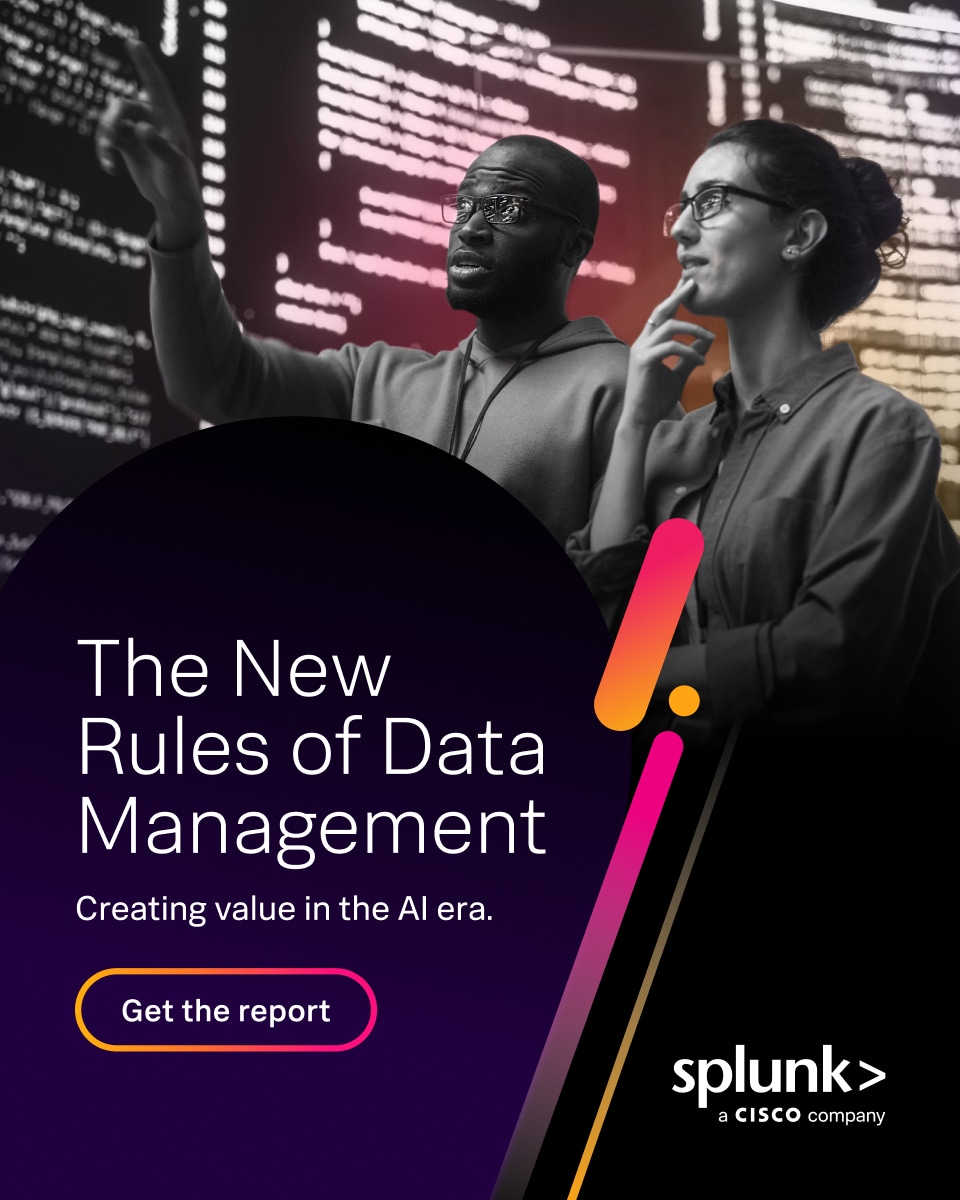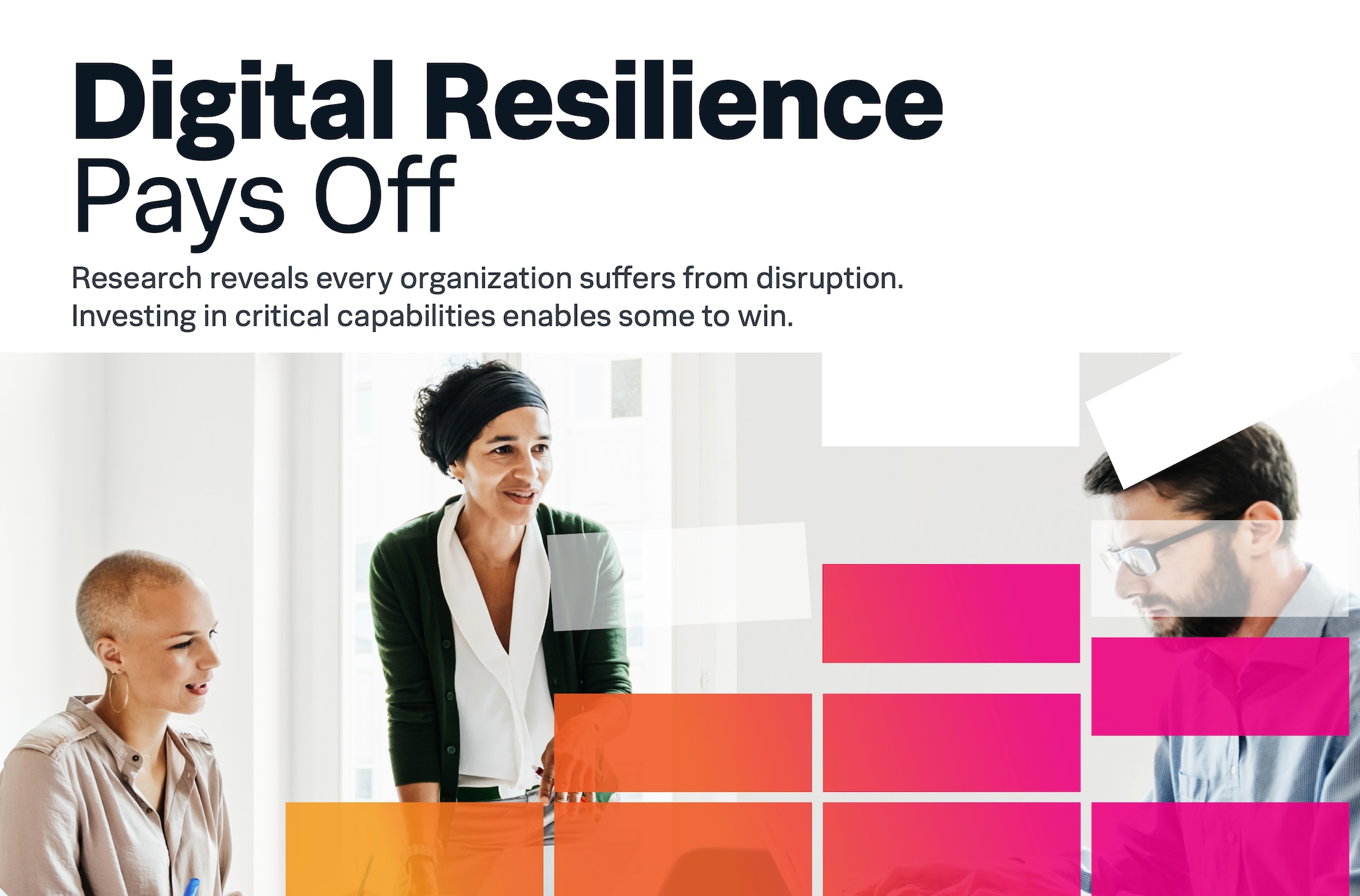AI and the Data Value Challenge: Why It’s Time to Rewrite the Rules of Data Management

Like the sailor in Coleridge’s “The Rime of the Ancient Mariner,” surrounded by ocean water that he cannot drink, modern organizations contend with similar challenges: data is all around, but it’s not doing them much good (or as much as it could at least).
Exploding data volumes have complicated the data management strategies for security and observability teams seeking to contain costs while meeting regulatory and compliance obligations. However, in the pursuit of these goals, some organizations have lost sight of the most important objective: creating value from their data.
 Our latest report, The New Rules of Data Management: Creating Value in the AI Era, captures trending shifts in data management and examines how organizations are structuring — and should be potentially rethinking — their data strategies. The research, conducted in partnership with Oxford Economics, reveals the insights, aspirations, and challenges of 1,475 global security, observability, and IT professionals.
Our latest report, The New Rules of Data Management: Creating Value in the AI Era, captures trending shifts in data management and examines how organizations are structuring — and should be potentially rethinking — their data strategies. The research, conducted in partnership with Oxford Economics, reveals the insights, aspirations, and challenges of 1,475 global security, observability, and IT professionals.
From the early days of simple data collection to today's sophisticated analytics and AI capabilities, organizations are reexamining their data strategies to strike the balance between abundance and utility. This report will help you reimagine your data management strategy, put those practices into play, and make your data do what it was intended to — create value for your organization.
The Complexity of Modern Data
Today, end user demands for increased connectivity, digitization, and AI-accelerated innovation are creating exponentially more data. The survey confirms data volume as a leading challenge for 67% of respondents, surpassed by 69% who claim maintaining data security and compliance are their top obstacles.
Organizations wrestling with data volume, compliance challenges and many other data management issues are also feeling far-reaching business impacts. Sixty-two percent of respondents claim that difficulties with data management resulted in compliance failures, 71% say they led to poor decision-making, and 46% confirm they led to competitive disadvantages.
These growing data challenges are only exacerbated by the outdated data management practices many organizations use that fail to effectively address the complexities of data across its lifecycle.
The New Rules of Data Management Are Worth the Effort
According to the survey, the two practices accounting for the lion’s share of organizations’ data management strategies are data lifecycle management (75%) and data pipeline management (73%). However, less-utilitized practices like data tiering, data reuse, and data federation present new opportunities to help organizations understand their data environment and significantly improve data accessibility.
These are a few data management practices that can help boost your data’s value:
- Data Tiering: Adopted by 36% of respondents, data reuse practices reduce storage costs and accelerates access to frequently used data, enhancing security and productivity.
- Data Reuse: Although only 16% say it comprises their data management strategy, data reuse presents opportunities to cut costs by minimizing redundant data and fostering collaboration within and between security and observability teams, opening the door for new insights and faster incident resolution.
- Data Federation: While 92% of organizations have some form of data federation in place, only 20% of respondents have a fully implemented practice. One of the most significant benefits of data federation is that it enables access and analysis across disparate data sources without data movement, providing faster access, improved governance, and better visibility.
As the adage goes “What got you here, won't get you there.” Organizations increasingly have new opportunities to rethink their data strategy and rewrite their own rules to see the advantages unfold in front of them.
Supercharged Benefits
According to our research, organizations that excel in data management embrace a trifecta of practices: fully implemented data federation, data pipeline management, and data lifecycle management.
These leaders stand out not only for their strategic data investments but also for the array of business benefits they achieve compared to their peers. Leaders also see boosts to data metrics, such as faster access (79% vs. 73%) and more efficient data processing (76% vs. 69%). This strategic approach leads to substantial cost savings (62% vs. 34%).
Going even farther than easing data management, organizations see a slew of benefits across both security and observability environments. On the security side, leading organizations report faster mean time to respond (MTTR) (79% vs. 61%), more successful threat neutralizations (65% vs. 45%) and fewer breaches (43% vs. 34%). In ITOps and observability, the trifecta enhances app and infrastructure performance optimization (79% vs. 60%) and generates better outcomes in monitoring critical business processes (76% vs. 58%).
A data management strategy isn’t one size fits all. But odds are that infusing an amalgam of lifecycle management, pipeline management, and fully implemented data federation into your data management strategy will give your security, observability and IT teams a big leg up when they seek to tame complexity and identify alerts amid the noise.
Why AI and Data Management Go Together
When discussing data management one cannot ignore the interconnection it has with an organization’s ability to successfully adopt AI and the reciprocal impact AI can have on data management as well. The combination of the two is like peanut butter and jelly — each enhances the other's effectiveness.
A robust data management strategy is crucial for AI, providing quality data that boosts AI model performance. Survey respondents recognize this, with 85% stating their data management strategy provides sufficient data volume and variety for valuable insights. Additionally, 74% report their strategy helps remove bias from datasets.
On the flip side, AI enhances data management by automating tasks and improving productivity, filling gaps in organizational practices. AI enhances data quality by automating repetitive tasks, as agreed by 73% of respondents, and opens new opportunities for data discovery.
Ultimately, the intertwined value of data management and AI is a force multiplier for innovation, allowing organizations to gain competitive advantages and make better informed business decisions.
Make a Plan To Maximize Your Data’s Value
Maximizing the value of security and observability data is not just about collecting and storing information. It requires a holistic approach that encompasses a curated and highly effective set of practices that enable organizations to achieve cost savings and turn their data into a powerful asset that drives success.
By focusing on key areas of lifecycle management, pipeline management, and fully implemented data federation, data management leaders can ensure their organizations remain agile, efficient, and ahead of the curve in the competitive and evolving landscape of data-driven business.
Read the full report for more findings, including what sets leading organizations apart and recommendations from Splunk experts on how to be innovative and resilient in the era of AI.
Related Articles
About Splunk
The world’s leading organizations rely on Splunk, a Cisco company, to continuously strengthen digital resilience with our unified security and observability platform, powered by industry-leading AI.
Our customers trust Splunk’s award-winning security and observability solutions to secure and improve the reliability of their complex digital environments, at any scale.




